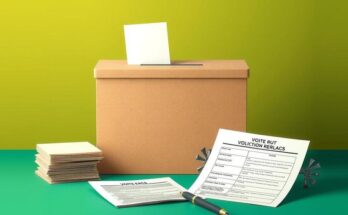Syria’s Druze community is navigating new political dynamics post-Assad, facing pressures from both an Islamist-led government and Israel. Amid rising tensions and violence, Druze militias remain active in self-defense. The community seeks inclusion within a reformed political framework while contending with economic challenges and the impact of sanctions, which complicate their quest for stability and peace.
Syria’s Druze population is striving to find a position in the evolving political landscape following the fall of longtime President Bashar Assad. Historically, the Druze community has maintained a distinct path amid dominant powers, and they now face the dual pressures of a new Islamist-led government and Israel, which has previously intervened under the guise of protecting Druze interests. The group is wary of governmental promises for inclusion amidst distrust of the Islamist faction, Hayat Tahrir al-Sham (HTS), linked to past violence with Sunni extremist elements.
Tensions are exacerbated, particularly with the Alawite minority loyal to Assad, culminating in violent clashes that resulted in numerous casualties. While the Druze, primarily located in southern Syria, have had contacts with the government, hostilities have emerged, such as the killing of a security force member in Jaramana, which led to government crackdowns.
Prime Minister Benjamin Netanyahu’s threats to protect the Druze were quickly rebuffed by community leaders. However, incidents such as the display of an Israeli flag represent rising apprehensions about regional influences amid the conflict. Compounding these fears is the persistence of armed Druze militias, which have formed to safeguard their communities against various threats, maintaining an armed presence rather than relinquishing their weapons.
Local militia leaders emphasize their defensive intentions, with hopes for integration into a future Syrian army that represents all citizens rather than oppressing them. The Druze community, with roots tracing back to the 10th century, seeks a voice in a political framework fostering equality and secularism, advocating for a government that transcends religious affiliations.
Growing frustrations are evident, particularly over public sector job losses and economic instability, spurring protests against the exclusionary tactics of the new authorities. Despite assurances from interim President Ahmad al-Sharaa regarding inclusivity, skepticism remains rampant as many feel marginalized, particularly during hastily arranged national dialogue efforts. Community members express a desire for a representative government that addresses the interests of all Syrians instead of favoring specific factions.
Simultaneously, economic sanctions complicate the situation, inhibiting access to resources needed for reconstruction and development. Activists acknowledge the precarious situation, fearing a return to civil unrest unless significant changes are implemented. Amid this tension, there is a shared longing for peace, highlighting the urgent need for unity in the face of adversity.
In conclusion, the Druze community in Syria finds itself at a critical juncture, attempting to maintain its identity and safety while navigating pressures from both the government and regional influences. Their call for inclusion in a secular and democratic Syria reflects a broader desire shared by many minority groups within the nation. The community’s commitment to peaceful coexistence, paired with growing frustrations over government actions, underscores the challenges ahead. As economic and political uncertainties linger, the Druze and other communities advocate for a more inclusive and representative governance structure that prioritizes stability and unity.
Original Source: apnews.com




